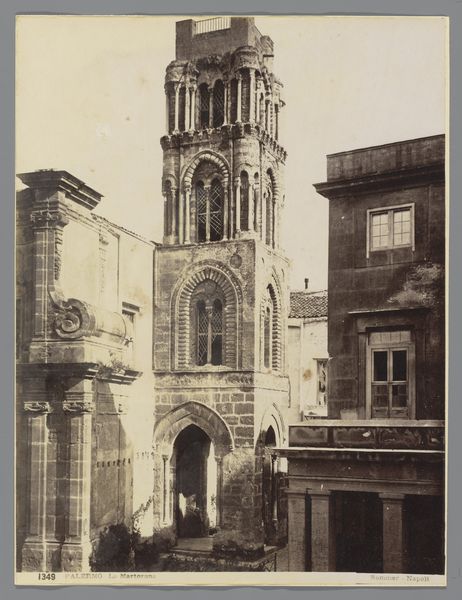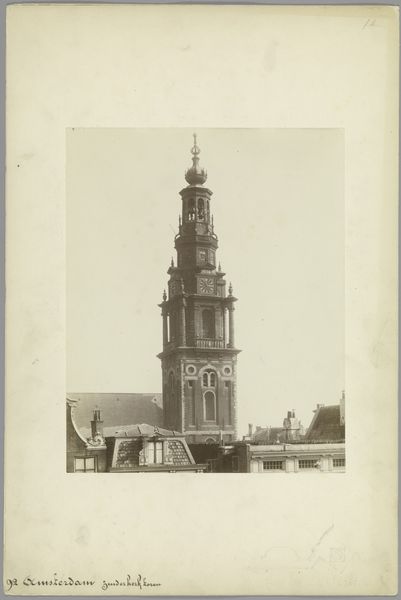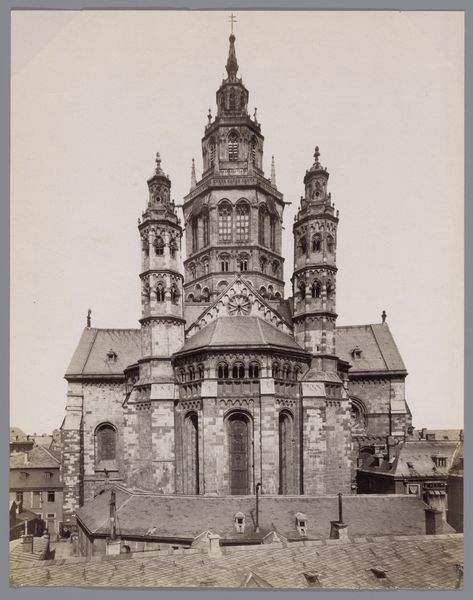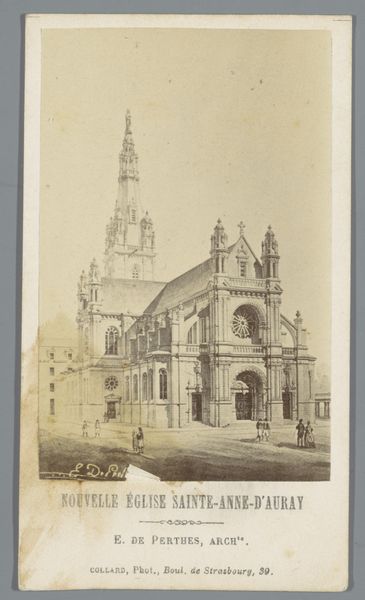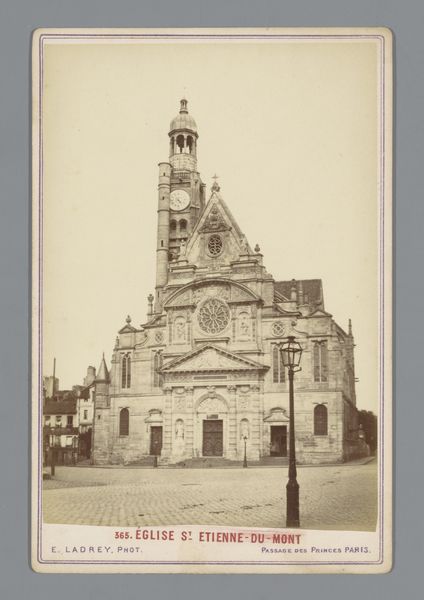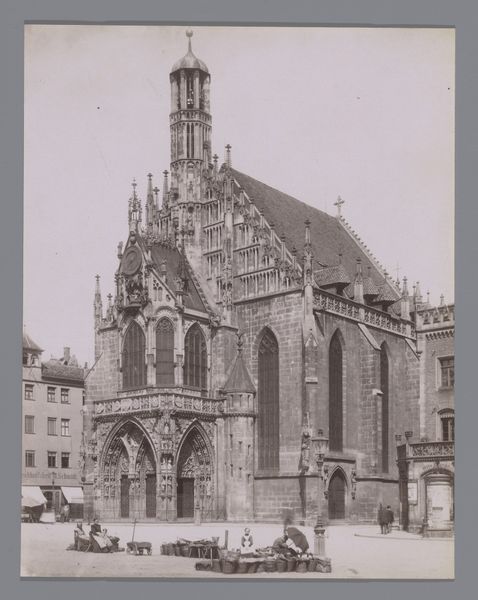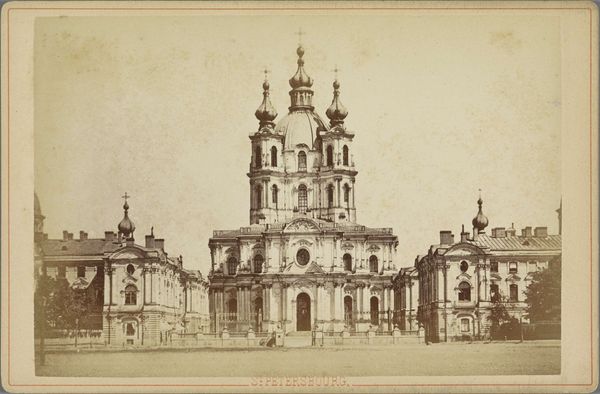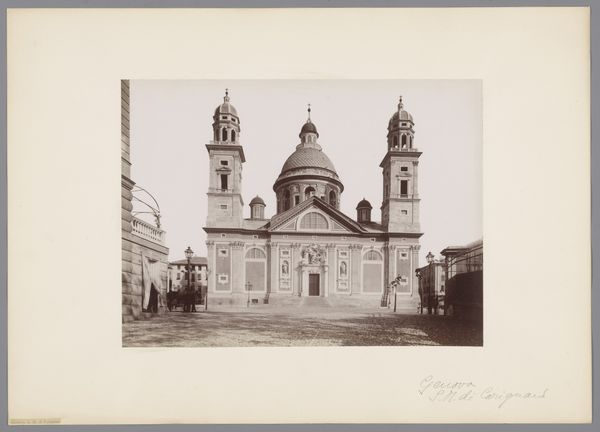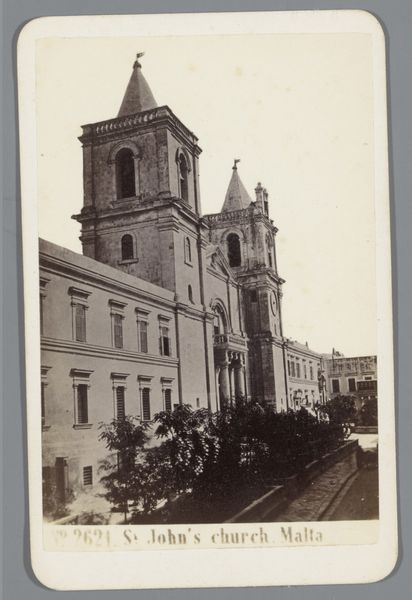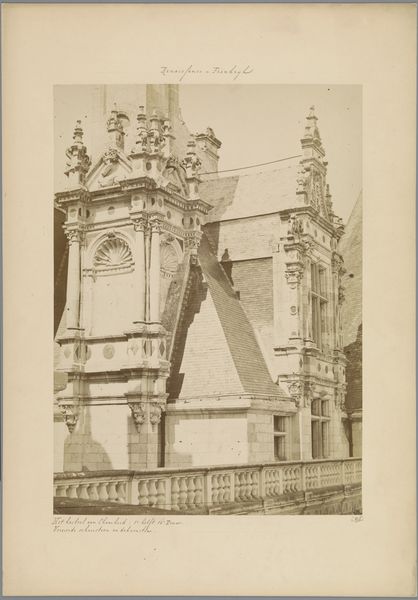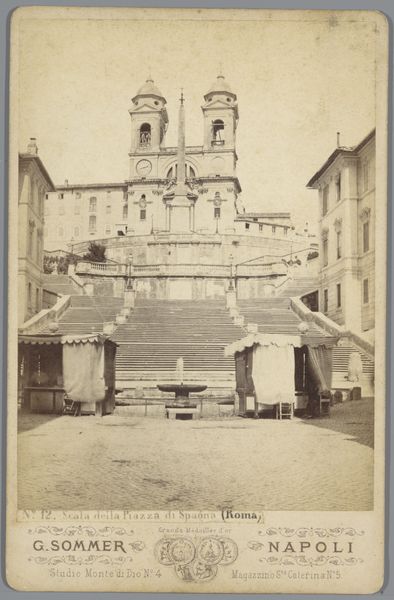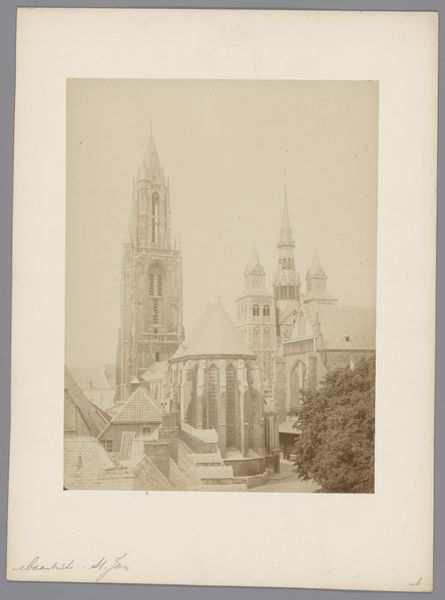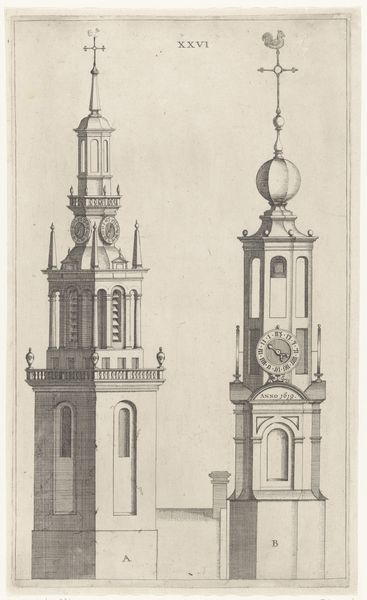
Dimensions: height 163 mm, width 109 mm
Copyright: Rijks Museum: Open Domain
Editor: Here we have Étienne Neurdein's photograph, "Kathedraal van Nancy," taken sometime between 1870 and 1900. The gelatin-silver print captures the cathedral in all its neoclassical glory. I find myself drawn to the photograph’s rather subdued and serious mood. What are your thoughts? How do you interpret the visual language at play here? Curator: The image resonates with a yearning for permanence, doesn't it? Consider the cathedral itself – a symbol of spiritual authority, amplified through architectural elements deliberately evoking antiquity. The clean lines, balanced symmetry, and the carefully positioned clock, speak to humanity’s aspiration for order, structure, and, fundamentally, control over time. This visual vocabulary becomes especially poignant in the context of 19th-century France. Does that reading resonate? Editor: It does. The clock feels less about practicality and more like a reminder of mortality within something designed to be eternal. Curator: Exactly! That tension—between the earthly and the eternal—is precisely what makes religious art so potent. But consider, too, the figures in the foreground, the horse-drawn carriage. These elements situate the cathedral within a lived reality. What might the placement of these elements suggest about society’s relationship with such institutions? Editor: Perhaps that the grand structure and ideals represented are embedded in daily life? A constant presence rather than a distant concept? Curator: Precisely. And photography, a relatively new medium at the time, reinforces this tangible presence, documenting the architecture. Notice how the grayscale further abstracts reality towards conveying symbolic meaning and weight. Editor: So, through Neurdein’s choices of composition, lighting, and subject matter, we're able to perceive these symbols in action and appreciate their continuing impact. That's insightful! Curator: Indeed. It is about more than simply recording history; it is how this work interprets and memorializes cultural memory.
Comments
No comments
Be the first to comment and join the conversation on the ultimate creative platform.
